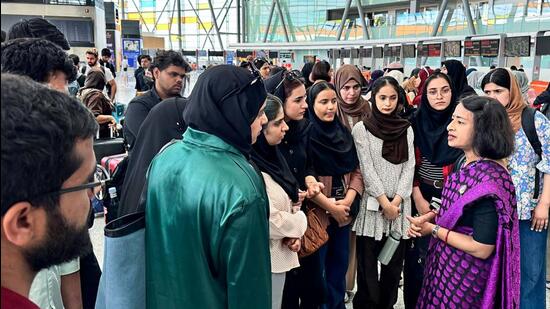- Courses
- GS Full Course 1 Year
- GS Full Course 2 Year
- GS Full Course 3 Year
- GS Full Course Till Selection
- Answer Alpha: Mains 2025 Mentorship
- MEP (Mains Enrichment Programme) Data, Facts
- Essay Target – 150+ Marks
- Online Program
- GS Recorded Course
- Polity
- Geography
- Economy
- Ancient, Medieval and Art & Culture AMAC
- Modern India, Post Independence & World History
- Environment
- Governance
- Science & Technology
- International Relations and Internal Security
- Disaster Management
- Ethics
- NCERT Current Affairs
- Indian Society and Social Issue
- NCERT- Science and Technology
- NCERT - Geography
- NCERT - Ancient History
- NCERT- World History
- NCERT Modern History
- CSAT
- 5 LAYERED ARJUNA Mentorship
- Public Administration Optional
- ABOUT US
- OUR TOPPERS
- TEST SERIES
- FREE STUDY MATERIAL
- VIDEOS
- CONTACT US
Kala Azar: A Public Health Concern
Kala Azar: A Public Health Concern
18-06-2024

Due to the increasing public health risk posed by visceral leishmaniasis (VL), commonly known as kala-azar, the WHO has introduced a new framework to guide health authorities, policymakers, and other stakeholders in their efforts to eliminate the disease in eastern Africa.
About Kala-azar:
- Kala-azar, also known as visceral leishmaniasis (VL), is a severe form of leishmaniasis caused by the protozoan parasite Leishmania donovani.
- It is transmitted to humans through the bite of an infected female sandfly, primarily Phlebotomus argentipes in India.
- Symptoms: The disease is characterised by fever, significant weight loss, swelling of the spleen and liver, and severe anaemia if left untreated. These symptoms can be fatal within two years if not addressed.
- Diagnosis: Diagnosis involves combining clinical signs with parasitological or serological tests, such as the rK39 diagnostic kit.
Kala-azar is endemic in 75 countries across Asia, Africa, and the Americas. India accounted for 18% of the global burden in 2020.
Neglected Tropical Diseases (NTDs):
- NTDs are a diverse group of 20 conditions or diseases primarily prevalent in tropical regions.
- They affect people living in impoverished communities and are caused by various pathogens, including viruses, bacteria, parasites, fungi, and toxins.
- NTDs have devastating health, social, and economic consequences.
- Some examples of NTDs are Guinea worm, Chikungunya, Dengue, Kala Azar (Visceral Leishmaniasis), and Elephantiasis (Lymphatic Filariasis).
- India is home to about 12 NTDs.
- The WHO estimates that NTDs affect more than 1 billion people, while the number of people requiring NTD interventions (both preventive and curative) is 1.6 billion.



